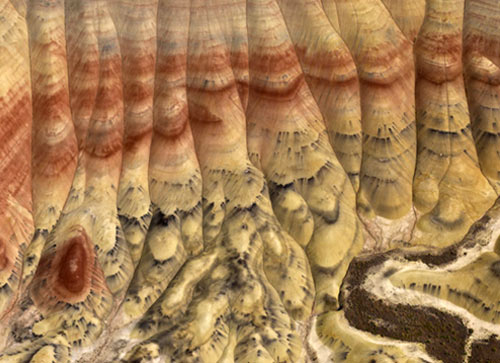Spreading Time Chromatographically – The Painted Hills of the John Day Fossil Beds National Monument
Wednesday, 13 June 2012
 Painted Hills – Bernhard Edmaier
Painted Hills – Bernhard Edmaier
The John Day Fossil Beds National Monument in Oregon is known for its layers of fossil plants and mammals that lived in the region during the Eocene and Miocene era – 44 million years ago. Part of the area is covered by a chromatographic landscape known as the Painted Hills.
Combined layers of volcanic materials, red fossil beds, grey shale and darkened dead vegetable matter are eroded and diffused by wind weathering and reconfigured it into well-defined chromatographic patterns. The hills appear as if the earthwork artists Christo and Jeanne Claude might have draped the landscape in Tie-dyed cotton, in subtle colours, instead of plain polypropylene.
 Painted Hills – Marc Shandro
Painted Hills – Marc Shandro
The patterns can be interpreted as terrestrial depositional sequences of materials originally existing over the vast swathes of time recombined into the present. In much the same way Chromatography separates constituents of mixtures through their movements at different speeds through a mediating substance, the Painted Hills spatio-temporally organise themselves into striate and plume patterns, resulting in a natural earthwork visualisation of ancient fossil eras, fragmented.
 Pfeiffer Chromatography Pattern
Pfeiffer Chromatography Pattern
A Flickr gallery of photographs of the Painted Hills can be found here.

















